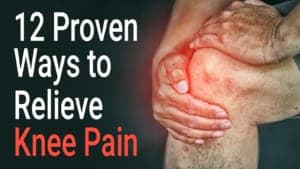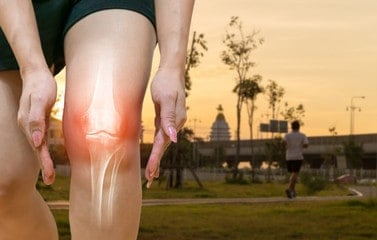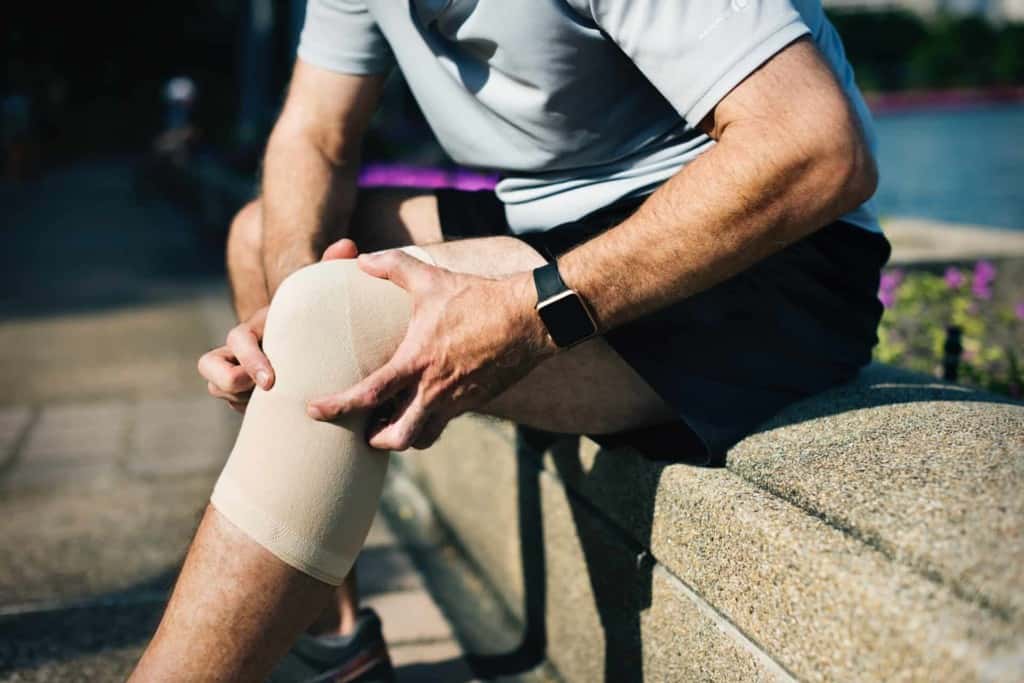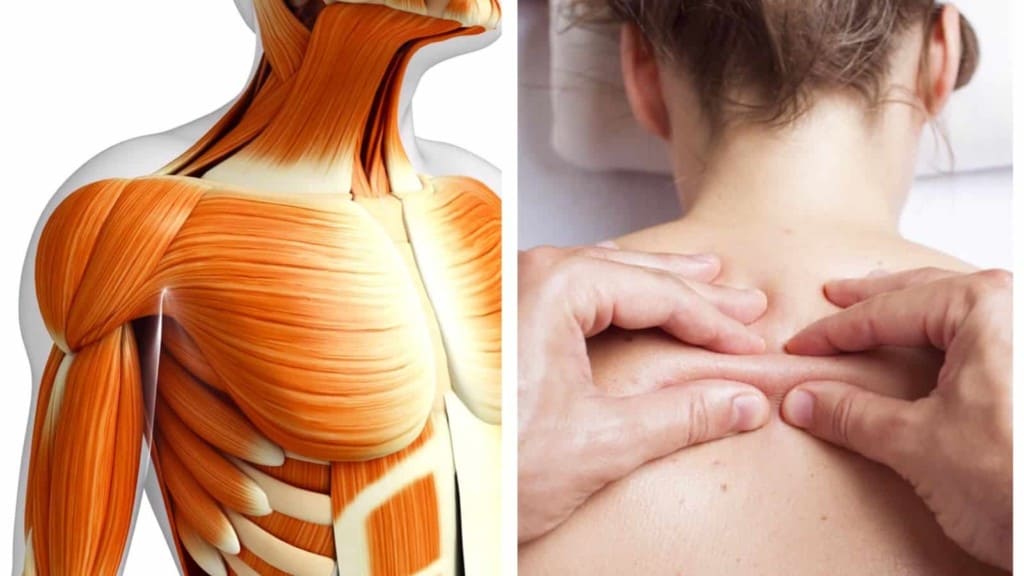Thanks to new research, stem cell treatments are becoming a useful option for meniscus tear repair.
The meniscus is a shock-absorbing pad inside the knee made out of cartilage. Unfortunately, a lot of people end up suffering from meniscal tears. Sometimes these occur during athletic events. However, they also happen while people are exercising or going about their lives.
Doctors used to routinely recommended knee surgery. However, surgery is no longer the only–or preferred–option. Indeed, the most current recommendation is to undergo months of physical therapy. More recently, scientists explored the use of stem cell treatments to repair meniscus tears using a minimally invasive approach rapidly. Their findings are nothing short of incredible.
What is a meniscus tear?
Meniscal tears come from movements that involve sudden, sharp changes of direction that place torque on the knee. Sometimes other parts of the knee are injured, such as ACL tears, but it is not uncommon for only the meniscus to be injured.
People can also injure their meniscus during falls, such as those caused by slipping on ice. Quite a few individuals have torn their meniscus during everyday activities that involve planting one foot with the knee bent while turning, a position that can occur while picking up a toddler, doing house or yard work, or merely trying to pick up something that you dropped.
Usually, there is a popping noise or sensation. What happens next depends on the severity of the tear:
- Minor tears cause pain and swelling that responds to RICE and goes away after a few days.
- Moderate tears cause pain and swelling that gets worse over two to three days and then slowly goes away. The pain and swelling may recur after the overuse of the knee.
- Severe tears make the knee feel wobbly, and it may give way suddenly without warning. Sometimes, the knee locks up.
One characteristic of a meniscus tear is that it generally doesn’t seem all that bad immediately after the popping sensation. Therefore, many athletes go on to finish their game or training event before realizing there is something wrong.
The pain and swelling get worse over the next few hours to days. If you suspect a knee injury, apply RICE (rest, ice, compression, and elevation) as soon as possible after the damage. Also, call your doctor for a follow up if the pain doesn’t resolve in a day or so.
Alternatives to knee surgery emerge
Physicians used to urge immediate surgery for everyone who had suffered a meniscus tear no matter how mild. Still, a series of studies a few years ago showed that arthroscopic repair of meniscus tears dramatically increased the risk of developing severe osteoarthritis within the next decade that required a total knee replacement.
It is not uncommon in medical practice for doctors to reverse courses like this when a procedure that was not adequately studied in the first place is put into everyday clinical use, and only after countless numbers of patients are harmed do doctors notice it isn’t a good idea.
Physical therapy and meniscus tears
Individuals who undergo physical therapy instead of surgery take longer to recover from the meniscus tear. However, they are far less likely to develop osteoarthritis in the affected knee. Currently, the medical guidelines suggest performing arthroscopic surgery only for meniscal tears that lead to the knee locking up, and everyone else should undertake physical therapy to strengthen the muscles that support the knee. Supplements like turmeric may help with knee pain during this process.
Most people recover after physical therapy. However, the process may take many painful months of limited physical activity. Furthermore, elite athletes may never return to complete function.
The meniscus itself has a minimal ability to heal. And most of the functional and symptomatic improvement induced by physical therapy results from strengthening the muscles around the knee. That new strength then takes take over the roles of the meniscus. Clearly, an alternative is necessary.
Stem cell therapy
Most cells in the body are terminally differentiated. They are a particular type of cell and can’t change into a different kind of cell. Nor can they divide and proliferate. In order to repair injured and aging tissues, the body keeps stem cells in most tissues. These are pluripotent cells that can reproduce and produce other pluripotent cells.
When exposed to the right environment, these cells then differentiate into specialized, terminally differentiated cells. And, we can now utilize these to replace injured cells to rebuild the tissue.
Scientists realized that they could isolate pluripotent cells from many parts of the body, amplify them in the laboratory, and then place them in impacted areas the body. There, the cells do the critical work of differentiating and healing damaged tissue.
Although rejuvenation science is in its infancy, doctors are trying it to heal intractable injuries and conditions. For example, a very promising treatment using pluripotent neuronal precursors for Parkinson’s disease has passed the early safety studies and is currently entering the clinical testing phase in Japan.
Repairing meniscal tears with stem cell supplementation
A recent systematic review of the use of stem cell therapy to treat meniscal tears identified 53 studies that applied variations of this type of rejuvenation therapy to treat meniscal tears, primarily in animal models. Scientists find the results encouraging, but no one technique stands out as being the most promising.
Many of the most promising techniques use tiny biocompatible scaffolds that are seeded with pluripotent cells derived from meniscal tissue and then placed into the knee using a minimally invasive approach. The platforms encourage the cells to proliferate and differentiate into new meniscus tissue to repair the damage caused by the tear.
Other scientists are working on approaches that don’t involve isolation of pluripotent cells but instead work by attracting the body’s endogenous pluripotent cells to the damaged meniscus. This approach is very intriguing. That’s because it avoids the often invasive methods necessary to obtain these types of cells from the body.
In this approach, unique scaffolds are placed inside the knee. The frameworks attract stem cells, which proliferate inside the platform and form new meniscal tissue. A systematic review of clinical use of these scaffolds in humans reported that most patients experienced significant improvements in symptoms and function. However, a long-term study is necessary to determine whether implantation of such scaffolds increases the risk of developing osteoarthritis later.
Beware of stem cell scams
People interested in getting some type of stem cell therapy should be aware that none of these therapies, other than a few limited uses of stem cells derived from umbilical cords, have been approved for use so far. Unfortunately, many companies are offering unapproved, untested “stem cell therapies” for a wide range of conditions. While most of these treatments are merely ineffective, some have been proven to be harmful. Patients have been blinded and paralyzed, and one developed an aggressive tumor, all caused by these untested treatments.
The FDA has issued a warning that consumers should confirm that the offered treatment is either FDA approved or is part of an FDA-approved Investigational New Drug Application (IND) clinical trial. The FDA has further warned that if a clinic says their pluripotent cell therapy doesn’t require FDA approval, they are lying.
Clinics object to the FDA warning
Many clinics that are offering non-FDA-approved treatments for knee problems say their patient results speak for themselves. They say they have derived pluripotent cells from fat, bone marrow, or blood, then injected the isolated cells into the troublesome knee and have watched hundreds of patients go from limping and sore to returning to intense athletic activities.
While these results are encouraging, there are no long-term results of these procedures on record. The doctors claim injecting these cells into the knee can’t possibly cause any harm and may do some good.
However, the fact that thousands of patients underwent minimally invasive arthroscopic surgery to repair a torn meniscus and then went on to develop severe knee osteoarthritis a decade later suggests their assumption that the operation is also unsafe. In fact, it might even be unwarranted.
Perhaps, the safety of the stem cell procedure needs additional testing before doctors apply it to large numbers of patients.
 Final thoughts on choosing stem cell therapy to treat a meniscus tear
Final thoughts on choosing stem cell therapy to treat a meniscus tear
Research into the use of stem cell therapy to treat meniscus tears is up-and-coming. However, it has only recently entered clinical trials and is not ready for routine application in the clinic.
Despite these treatments not having been proven to be safe or effective, many clinics are currently offering them. The FDA has issued a recent warning that these clinics are breaking the law. Furthermore, they may be causing permanent harm to patients undergoing experimental and unregulated therapies.
Patients interested in undergoing rejuvenation treatment of their meniscus tears right now should consider volunteering for a registered clinical trial or seek an FDA-approved doctor. That is a safe alternative to seeking out a clinic offering an illegal, untested, and potentially unsafe therapy. The treatment is very promising, but it needs more study to work out the kinks before it becomes a routine treatment for everyone.
In the meantime, while we wait for the scientists to conduct their experiments, physical therapy and exercises to strengthen the knees are proven, safe, and effective ways to relieve knee pain and restore knee function.




















